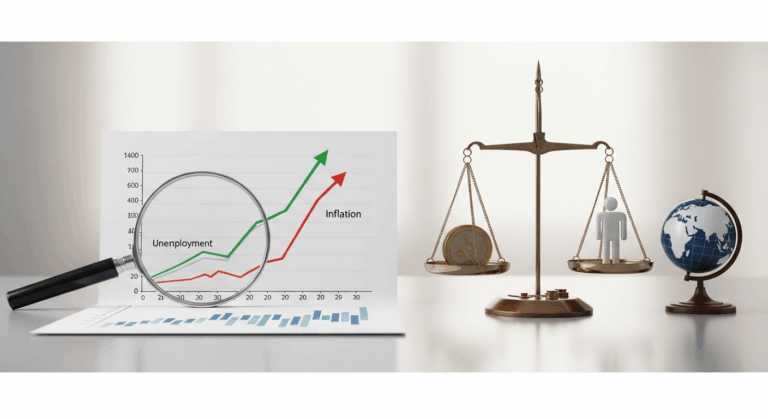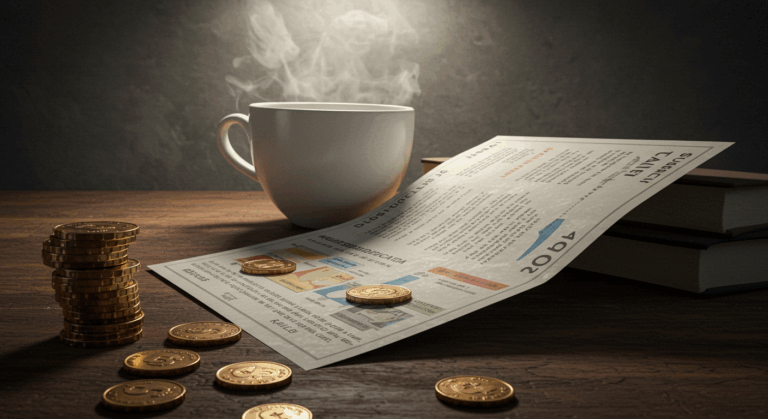Microeconomic Analysis: How It Affects Your Personal Finances
Have you ever wondered why the price of your morning coffee fluctuates, or why some skills command higher salaries than others? These are not random events; they are governed by powerful principles. A microeconomic analysis provides the framework to understand these everyday financial occurrences. Far from being a dry academic subject, microeconomics is a practical tool that, once understood, can fundamentally improve how you manage your money, build wealth, and make decisions. This article will demystify these core concepts and show you how to apply them directly to your personal finances.
By delving into the mechanics of supply, demand, and choice, you will gain a new perspective on your own financial behavior. We will provide actionable insights that empower you to navigate your economic world with greater confidence and control, turning abstract theories into tangible financial strategies.
What Exactly Is Microeconomics?
At its heart, microeconomics is the study of economic behavior on a small scale. It focuses on the decisions made by individuals, households, and businesses. Think of it as the zoom lens of economics. While its counterpart, macroeconomics, looks at the big picture—national unemployment rates, inflation, and gross domestic product (GDP)—microeconomics examines the individual trees that make up the forest. It asks questions like: How does a consumer decide what to buy? How does a company set its prices? What determines the wages you earn?
The core of microeconomics revolves around one central problem: scarcity. Resources—whether it is your time, your money, or the goods available in a store—are finite. Because of this, you are constantly forced to make choices. Microeconomics studies the logic behind these choices, analyzing how you allocate your limited resources to satisfy your unlimited wants and needs. Understanding this is the first step toward mastering your personal finance.

The Core Principles That Influence Your Wallet
Several fundamental microeconomic principles directly impact your daily financial life. Internalizing them can transform you from a passive participant in the economy to an active and informed decision-maker.
Supply and Demand: The Ultimate Price-Setter
This is the most famous principle for a reason. The price of nearly everything you purchase is determined by the interaction between how much of it is available (supply) and how much of people want (demand). When a popular new smartphone is released with limited stock, high demand and low supply drive the price up. Conversely, when avocados are in season and flood the market, the increased supply often causes prices to drop. Your personal decision to buy or not to buy at a certain price is a small part of the total demand, collectively shaping the market.
Opportunity Cost: The True Price of a Decision
Every choice you make comes with a hidden cost. The opportunity cost is the value of the next-best alternative you had to forgo. For instance, the opportunity cost of spending 500 dollars on concert tickets is not just the money itself; it is what you could have done with that money instead, such as investing it, paying down debt, or putting it into an emergency fund. Thinking in terms of opportunity cost forces you to evaluate your choices more critically. Before making a significant purchase, actively ask yourself: What am I giving up to have this? This simple question is a cornerstone of sound financial planning and smart investment.
Utility: The Pursuit of Satisfaction
In economics, utility refers to the satisfaction or benefit a person gets from consuming a good or service. The theory of rational choice suggests that individuals aim to maximize their utility. This explains why you might choose a more expensive product that offers greater convenience, durability, or enjoyment. Understanding your own utility helps you recognize what you truly value, allowing you to align your spending with your personal goals rather than societal pressures or marketing gimmicks.
Applying Microeconomics to Your Daily Life
Theory is only useful when applied. Here is how these microeconomic concepts play out in your key financial areas.
Budgeting and Spending
A budget is essentially a plan for allocating your scarce resource: your income. By understanding your own demand patterns—what you tend to buy and at what prices—you can create a more realistic and effective budget. When you see an item on sale, you are reacting to a change in price. Recognizing whether your demand for that item is elastic (you buy much more when it is cheaper) or inelastic (you buy the same amount regardless of price) can help you differentiate between a genuine need and an impulse purchase triggered by a marketing tactic.
Savings and Career Choices
Your decision to save money is a microeconomic choice involving time preference. Are you willing to delay gratification now for a greater reward later? The interest you earn on savings is the reward for that delay. Similarly, your career path is a microeconomic market. Your skills, experience, and education are the supply you offer to the labor market. The demand for those skills from employers determines your salary. To increase your income, you can increase the value of your supply by acquiring new, in-demand skills or certifications. For tips on building a fund for education, check out our resources on Savings.
Practical Steps to Use Microeconomic Thinking
You do not need a degree in economics to benefit from its insights. Here are some practical ways to start thinking like a microeconomist:
- Conduct a Personal Supply and Demand Analysis: Track your spending for a month. Categorize your purchases and note why you made them. This helps you understand your personal demand curves and identify areas where you can cut back without sacrificing much utility.
- Always Factor in Opportunity Cost: For any non-essential purchase over a certain amount (e.g., 100 dollars), write down two other things you could do with that money. This exercise makes the true cost of your decision tangible.
- Invest in Your Human Capital: View yourself as a business. Your skills are your product. Research which skills are in high demand in your field or desired field. Investing in training or education is an investment to increase your market value and future earning potential.
- Understand Diminishing Marginal Utility: This principle states that as you consume more of something, the additional satisfaction you get from each new unit decreases. The first slice of pizza is amazing; the eighth is less so. Recognize this in your spending. Will a third pair of similar shoes really bring you as much satisfaction as the first? This helps curb overconsumption.
Conclusion: Empowering Your Financial Future
Microeconomic analysis is far more than an academic exercise; it is a lens through which you can view your own financial world with stunning clarity. By understanding the fundamental forces of supply and demand, the true cost of your choices via opportunity cost, and the drivers of your satisfaction, you move from being a passive consumer to an empowered economic agent.
These principles are at play in every financial decision you make, from buying groceries to negotiating your salary and planning for retirement. Integrating them into your thought process gives you a durable framework for building wealth, managing debt, and achieving your long-term goals. Start applying these concepts today, and take decisive control of your financial destiny.
Frequently Asked Questions (FAQ)
What is the main difference between microeconomics and macroeconomics for my finances?
The simplest distinction is scale. Microeconomics deals with your direct, personal sphere: your income, your spending habits, your investment choices, and the prices of the specific goods you buy. It is about your individual decisions and their immediate consequences. Macroeconomics deals with the broader environment your finances exist within, such as national inflation rates, which erode the purchasing power of your savings, or interest rate policies set by a central bank, which affect your mortgage and loan costs.
How can I use opportunity cost to make better investment decisions?
Opportunity cost is crucial for investing. When you consider an investment, for example, buying shares in a specific company, its opportunity cost is the return you could have earned from the next-best alternative. This could be investing in a different stock, a bond, real estate, or even a high-yield savings account. A savvy investor always compares a potential investment not just against its own risks, but against the potential returns of other available options. It also forces you to consider paying down high-interest debt as a valid alternative, as the guaranteed return is the interest you save.
Is it necessary to hire a financial advisor to apply these principles?
It is not strictly necessary to hire an advisor to apply basic microeconomic principles like budgeting or considering opportunity costs in daily spending. These are tools anyone can learn and use. However, when it comes to complex financial situations, such as creating a diversified investment portfolio, retirement planning, or navigating significant tax implications, consulting a financial advisor with demonstrable experience is highly recommended. A professional can provide personalized guidance tailored to your specific circumstances and help you apply these economic concepts at a much more sophisticated level.





